Have you had trouble with sporadic sprouting, thin roots, too many weeds, or low carrot yields? You don’t need to be a pro to grow carrots, one of the hardest garden foods. These easy-to-follow tips and tricks will help you always get sweet carrots.
Regarding Carrots
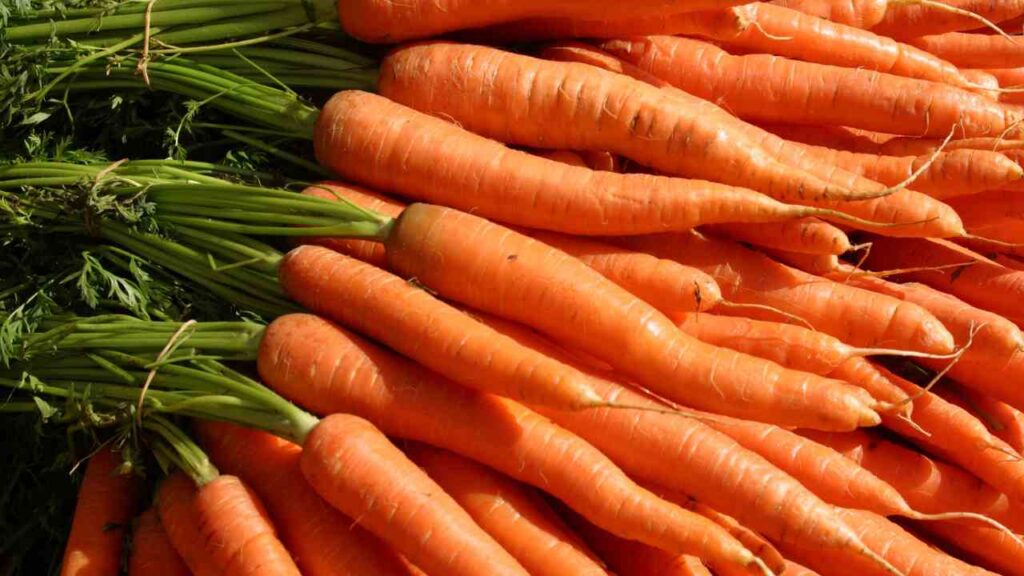
Carrots are picky plants that need extra-loose soil that stays moist all the time. Before you plant, use a broad fork or a digging fork to loosen the top 10 inches of dirt completely. Plant the seeds in the spring or fall, when the soil is cool (45 to 80°F/7 to 27°C). Make sure the plants always have enough water, and never let them dry out.
Wait for the seeds to sprout, and space them out one to two inches apart as soon as they do. It’s warm during the day and cold at night, which makes carrots sweet. Plants should receive full sun for the fastest growth.
13 Ways to Grow the Best Carrots in Your Garden
Don’t give up yet on growing carrots! This famous and tasty root gives farmers a lot of trouble, but the answers may be easier than you think.
Pick the Correct Type
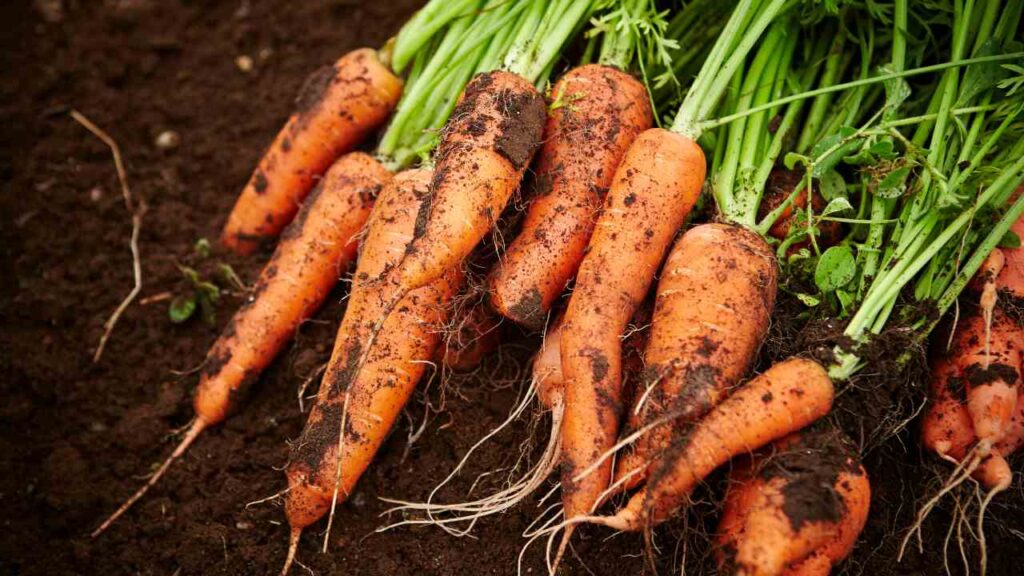
You can find the best carrot for your needs by trying out different kinds in the spring and fall.
Carrots are not all the same! Choosing the right varieties is the first step to growing a lot of roots. Have you ever noticed the difference between baby carrots that are really sweet and cooking carrots that are chunky and dense?
You may also find that grocery store carrots don’t taste as delicious as farm-fresh ones if you go to farmer’s markets. All of this has to do with choice.
Factory growers often choose carrots for their high yields over their great tastes. Heirloom carrots may taste great, but they don’t produce as many carrots.
Garden varieties are a beneficial mix of the two. All carrots are cool-season crops that do best in the cooler months of spring and fall. To find the best carrot variety for your environment and taste buds, try a few different types one after the other.
Carrots in the Spring vs. Fall
Some carrots are grown to be eaten right away, while others are better for storing for a long time.
The first step to success is planting your carrots at the right time for their type. Growers grow some types of carrots for spring harvest, while others grow them for fall harvest and long-term storage.
Carrots grown in the spring tend to be ready to eat sooner and have a sweeter taste and a softer texture. Carrots grown in the fall take longer to grow and have thicker skins that help them last longer when stored. They work better for stews, roasts, pickling, and putting food in jars.
You should also think about what you want to do with your carrots. Plant breeders have put in a lot of work to create cultivars that are perfect for different tasks in the yard and on farms.
If you want to snack on very sweet, crunchy carrots right from the yard, you need to pick a type that was specifically bred to taste excellent when eaten fresh. But if you want a carrot that will last all winter in the fridge, those fall store carrots are the best.
Best Carrots for Spring

“Scarlet Nantes” and “Yaya” are two of the best spring carrots.
“Scarlet Nantes” is sweet, crisp, deep orange, and round all the way through.
“Yaya” is a highly sought-after early Nantes variety that organic farmers like.
“Tendersweet” cultivates evenly, can withstand frost, and is perfect for early spring.
“Little Finger” carrots are flexible baby carrots that are about 3″ long and ideal for eating right away.
“Carnival Blend”: Thin roots that are fun and festive with oranges, purples, reds, and yellows
Best Carrots to Store for Fall
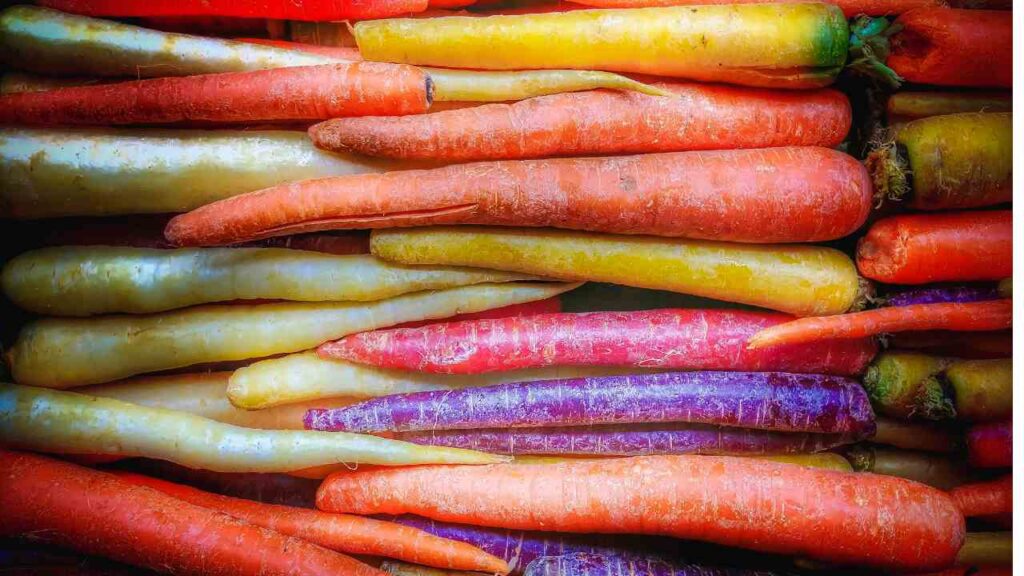
The “Rainbow” carrot comes out in the fall and has big seeds that are excellent for putting in pickles.
Rainbow has big roots that are excellent for cooking.
“Shin Kuroda” is suitable for late planting and has thick, curved roots that are good for storage.
“Danvers 126” has roots that are high in fiber and can handle heat. You can plant it in late spring, summer, or fall.
Make the Soil Very Loose
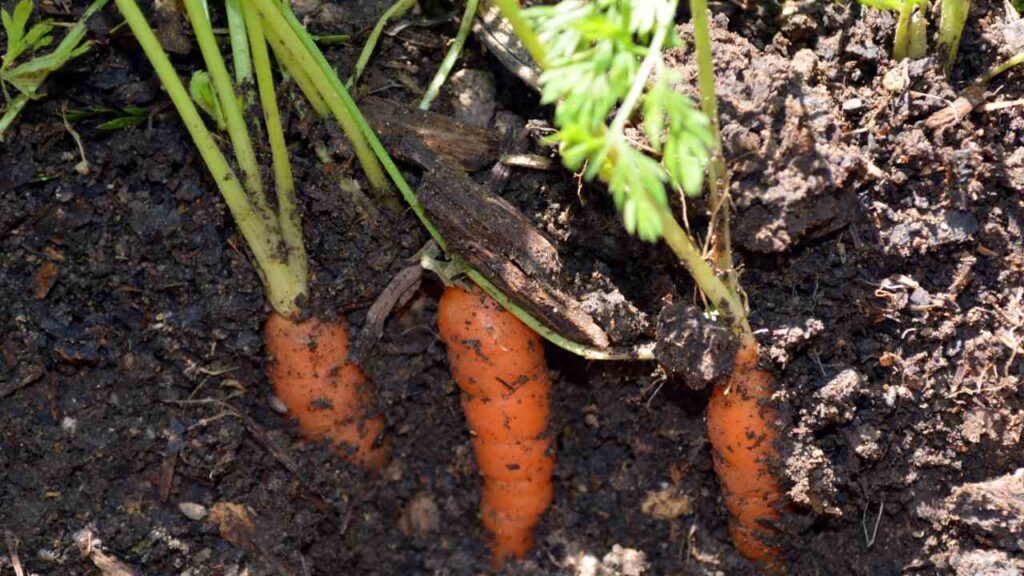
Add compost to the dirt and break it up at least 6 inches deep to make it ready for the carrot seeds.
Even though you can eat the greens, the bright orange (or purple or yellow) roots are the most sought-after part of the plant. Packing down the earth prevents these roots from forming beautiful, long, cylindrical, or cone-shaped structures. If you often pull up carrots that are short or don’t look right, it’s probably because the soil is too hard.
Roots are strong, but not very strong. They only grow outward so far before giving up and turning around.
Before you plant carrot seeds, add compost to the dirt and break up the bed. You can use either a large fork or a digging fork. Break up the dirt at least six inches deep to allow the roots to grow straight down.
This makes the dirt more airy, which speeds up establishment, evens out the moisture, and encourages strong growth. Additionally, dirt that is less compacted supports a wider range of helpful microorganisms.
Choose a rounded carrot variety like “Tonda di Parigi” if your garden beds aren’t very deep or if you have heavy clay soil. These unique little carrots grow more like radishes but taste excellent just the same.
Plant Seeds at the Right Time
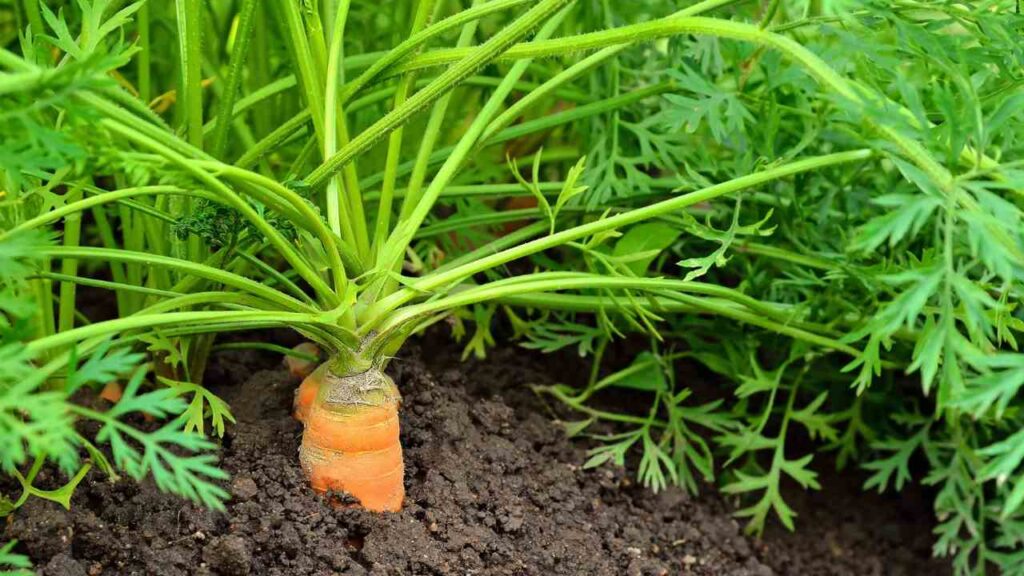
Plant your carrots early in the fall so they can grow before the ground freezes.
It’s best to plant carrots two to four weeks before the date of your last spring frost. Despite their ability to withstand frost when fully grown, these plants still require a moderate degree of warmth for germination.
Check that the soil is at least 45°F (7°C) warm with a soil monitor. It should be between 60°F and 85°F (6°C and 29°C). Place a clear or black tarp over the soil’s surface to help the sun’s rays reach the beds faster in the spring.
Because the taproots are extremely sensitive to movement, transplanting is not a good idea. It’s sometimes okay to use recyclable pots, but I don’t think it’s worth it to move these roots.
You should plant fall carrots at least ten weeks before the first frost so they have plenty of time to grow. As soon as it starts to snow, the roots will get sweeter.
They can stay in the ground until it gets below 20°F (-7°C). To prevent frost damage, it’s advisable to remove them before the temperature drops significantly.
Freezing causes soft spots and broken cells in the roots, which are short-lived. They don’t have the signature carrot crunch and are more likely to go bad.
Remember that you can grow multiple rows of carrots throughout the season. This crop won’t just grow once. You can plant a new bed of carrots every two weeks until late spring if you start planting seeds one to two weeks before the last frost. In the middle of summer, stop growing carrots.
Then, start planting them again every three weeks until 10 to 12 weeks before your usual first fall frost.
Plant at the Right Depth
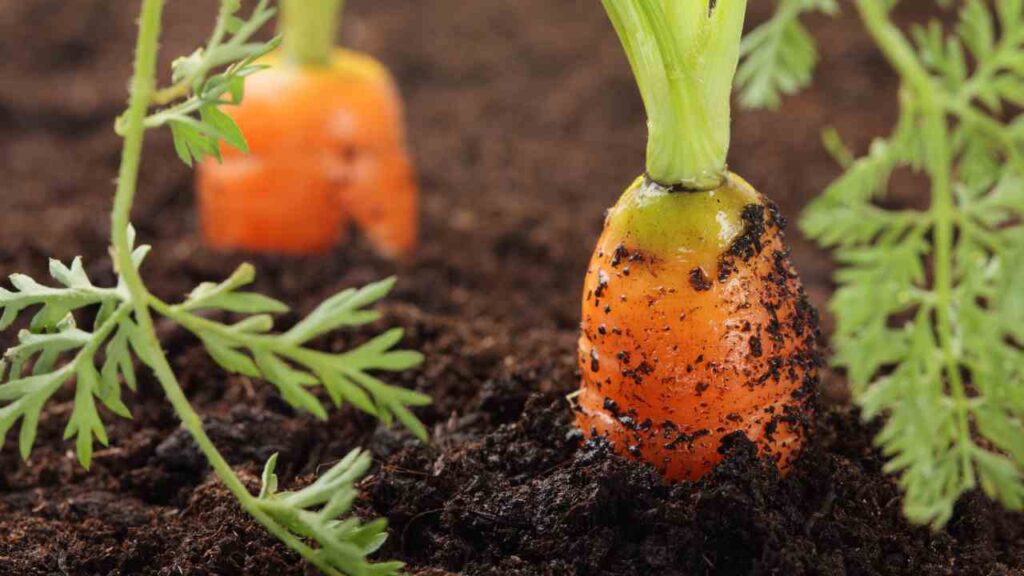
To make sure the carrot seeds germinate, they should be put about ¼” deep.
Carrot seeds are too small to plant deeply in the ground. If there is too much dirt on them, they won’t have enough energy to grow above the ground.
You shouldn’t plant the seeds more than ¼” deep. Plant the seeds and lightly press them into the ground. To keep them in place, sprinkle sieved compost or fine vermiculite over them.
Can you already tell that carrots are picky? There’s no doubt that these bright roots are the queens of vegetables. Once you master the first few crops, you’ll become an expert in carrot cultivation quickly.
Use the Right Spaces
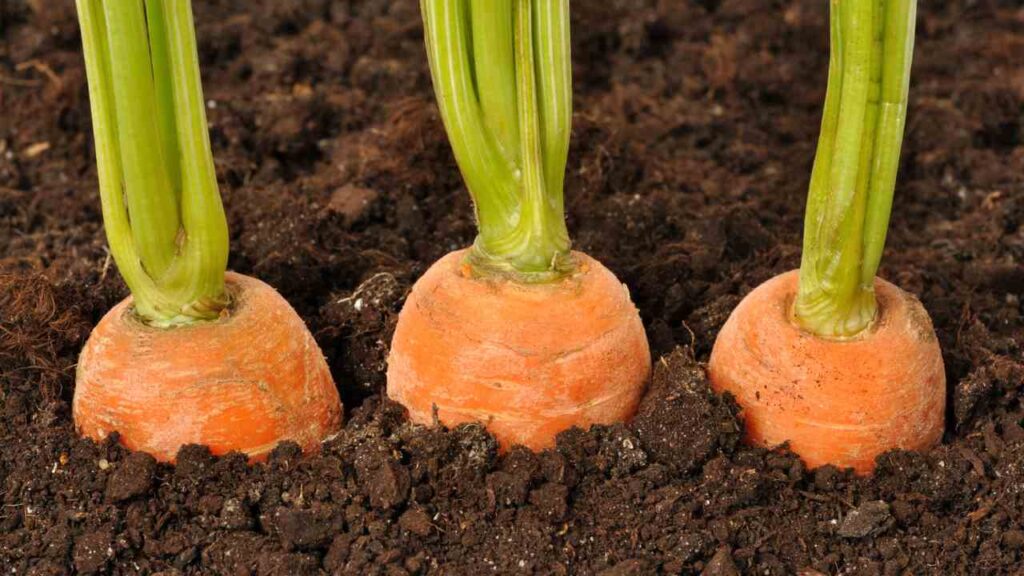
Make sure there is enough space between the carrot seeds by cutting out any that are too thick.
Most types should have about six inches between rows and one inch between plants.
Two to three inches of space between roots is suitable for bigger ones, but I wouldn’t plant seeds more than ¾ inch apart unless you want carrots that are very thin.
Don’t worry if you spread too many seeds in one place by chance. We’ll talk about the best ways to thin them out below. Overseeding and thinned plants are always better than underseeding and leaving a lot of room bare.
Use Irrigation From Above to Help Plants Grow
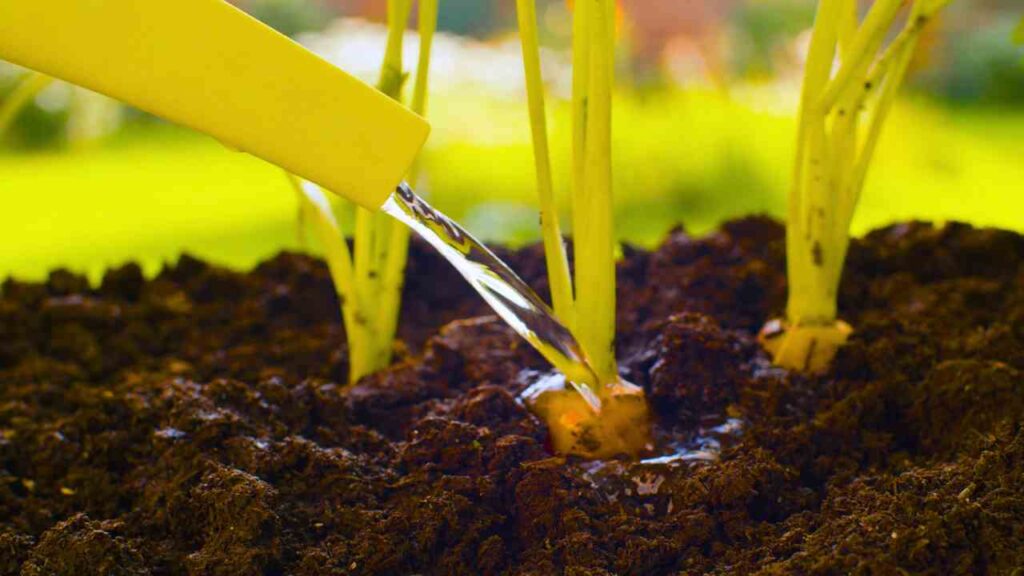
Use overhead sprinklers to water the carrot beds well every day.
For most of your yard plants, drip irrigation works great. As long as you water them after they sprout, carrots also respond well to drip irrigation.
If you use drip lines to water your carrots, you might be disappointed by how few seeds sprout. Instead, use sprinklers or a watering hose with a fan-nozzle to properly water newly planted carrot beds.
When it comes to water, these tiny seeds are very picky. When you water, you should generously cover the bed with water from the top.
You need to make sure that the water gets into the dirt without moving the seeds. Move the hose back and forth slowly over the bed a few times to do this.
If it rains frequently, you’re fortunate! When it rains a lot in the spring, carrots do really well because you won’t have to work as hard to water them.
To keep the earth from drying out, it’s important to water deeply. The harsh spring sun can easily dry out the top few inches of earth, which is where the picky seeds are hanging out, trying to soak up as much water as they can.
If you use overhead irrigation to water your carrot beds well every day, you will be a pro at harvesting carrots later in the season.
Cover The Row
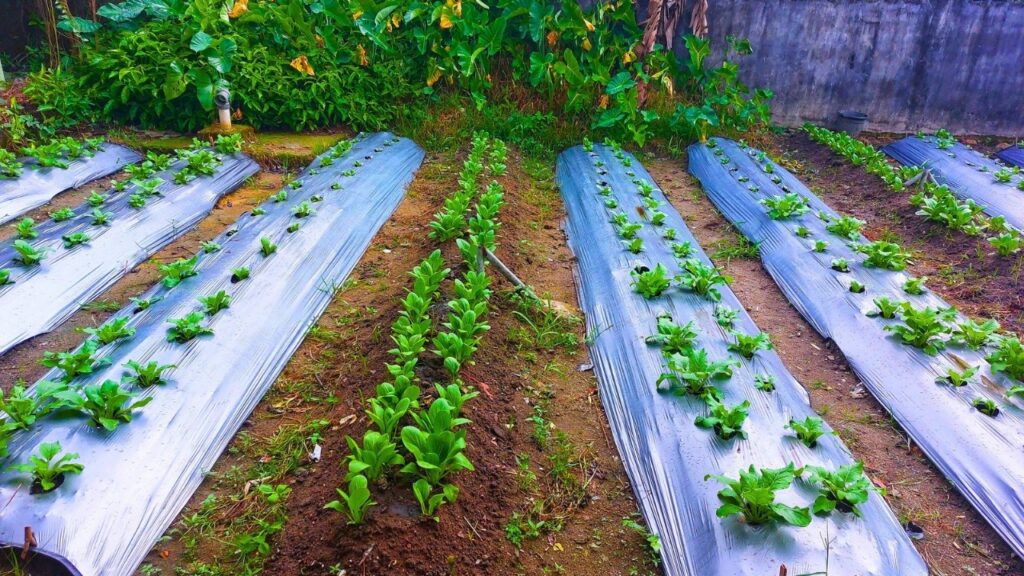
To avoid short watering, lift the row cover before you water the seeds.
Row cover plays a crucial role in carrot cultivation as it maintains the soil’s warmth directly on top.
Place this loosely spun fabric over freshly seeded beds and secure it with smooth stones or sandbags. It will raise the temperature of the earth and help keep water in, which will help seeds germinate faster and more evenly.
Row cover lets both light and water through, but I suggest moving the row fabric before you water. People often mess up when they water the seeds from above the row cover. This might work to soak the bed, but it usually just barely wets it.
The water can soak through the cloth but has a difficult time wetting the ground below evenly. To keep the soil warm and wet, lift one edge of the row cover and water the seedbed. Then, put the cover back down.
You won’t have to worry about these things anymore because those stubborn seeds’ roots will go deeper. If you want to, you can remove the moving row cover and run drip lines under it. During the growth phase, this method is the most important.
Don’t Let Carrot Seeds Dry Out
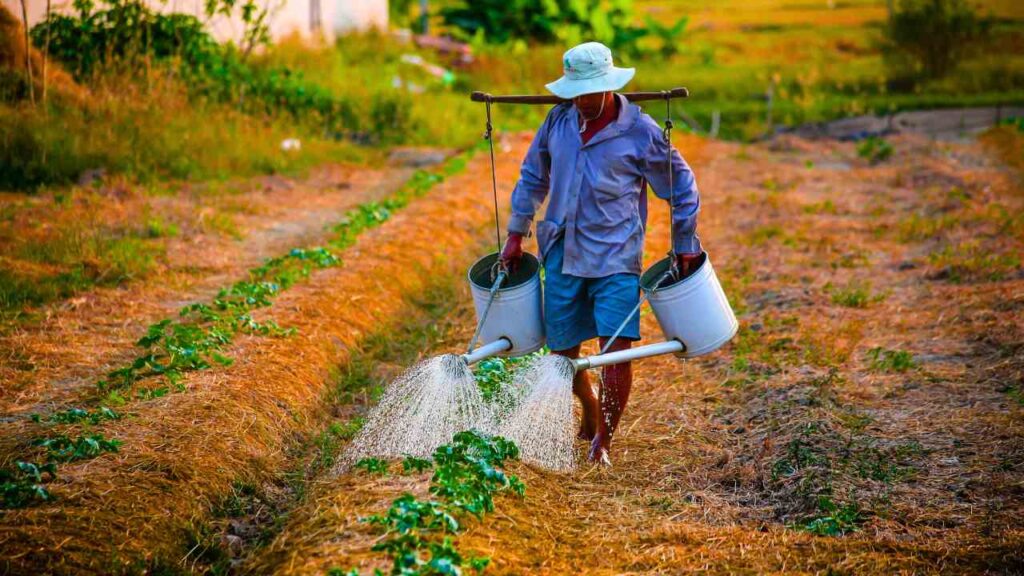
To help early growth, make sure the dirt is damp but not soaked.
Most veggie plants take less time to sprout than carrots. Picky seeds need at least 14 days to grow, and sometimes up to 25 days. If you want carrots, the worst thing you can do is let the seeds dry out while they’re sprouting.
As little as one day of dry soil can kill seedlings before they can reach the top and grow to their full size.
Check on your carrot seeds every day to make sure they are still wet. How does the earth feel? Stick your finger in it at least three inches deep and squeeze it. It’s likely that the earth is too dry for the seeds if your skin comes out clean.
Many farmers struggle with excessive watering, but this is less of a concern when it comes to carrot germination. While the earth shouldn’t become saturated and puddled like a lake, it does require a sufficient amount of water to facilitate rapid plant growth.
Try a Seedbed That Is Old
When you use the old seedbed method to grow carrots without weeds, timing is very important.
Carrots need a lot of water, and they are also very sensitive to bugs that try to take their space. If you have a lot of weeds in your carrot bed, the roots will be weak and not grow to their full size. Also, pulling weeds out from between tiny carrot plants is a lot of work.
Many farmers and market gardeners use the stale seedbed method to make sure that carrots sprout in an area with few weeds. With an old seedbed, weed seeds can grow before the crop.
We pull out the weeds just before the carrot seeds emerge from the ground, allowing the crop to grow without any competition. The key is to time it right.
A flame weeder or a piece of cardboard is all you need. The first one is easier for a small garden at home, while the second one is better for bigger beds.
To make an old seedbed, do the following:
- Fill a clean flower bed with compost and make sure it is full.
- Follow the steps above to plant your carrot seeds.
- Place a few radish seeds near the end of the bed so that you can see them
- Give the seeds a lot of water and keep the moisture up.
- You could cover the carrot with cardboard.
- As soon as the radish seeds sprout, you should get rid of any weeds that have grown nearby.
- Since the radish sprouts faster than the carrots, it’s like a timed alarm.
- Use a flame torch to thoroughly remove any bean thread-stage weeds from the entire bed.
- Move cardboard up to give carrots light and promote growth.
Don’t do this if it seems too hard! Be sure to remove weeds properly as they appear. There may be weeds close to your carrot seeds.
To remove the weed, carefully lift the carrot seedling from the ground while holding the base of the carrot with one hand. Pulling weeds will prevent uprooting or upsetting your crop.
Thin Plants
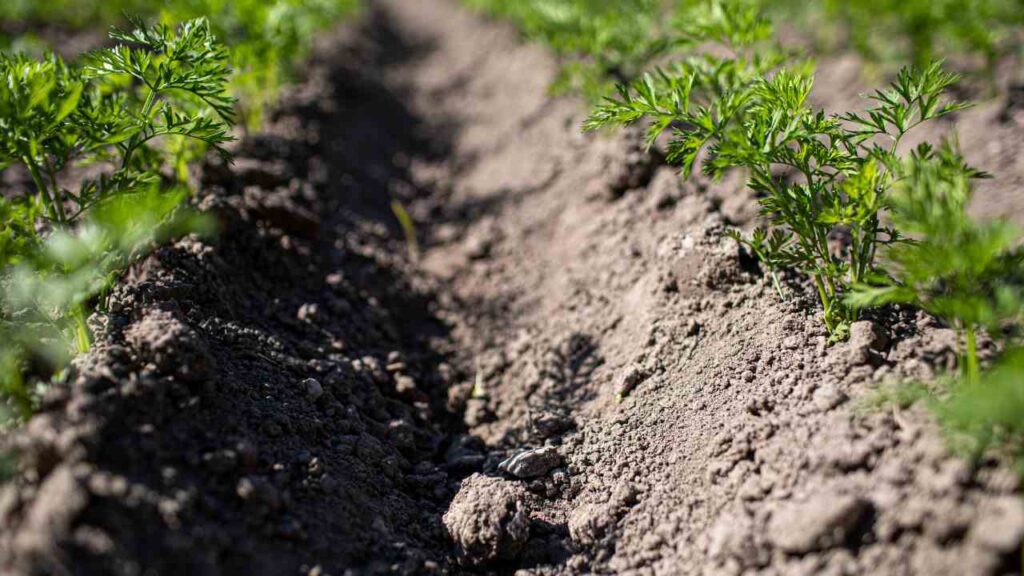
Carrots will grow better if you thin out plants that are getting too crowded early on.
As soon as the carrot seeds start to grow, 75% of the battle is over! Now you just need to separate the seedlings and take care of them until it’s time to gather.
Once the carrots grow, they don’t need to be worried about anything. By thinning, you ensure that each root can reach its full size without facing competition from other roots. If you grow carrots too close to each other, they will become small and thin like stick roots.
Is there insufficient space between the seedlings?
Cut them out with needle-nose pruners or the tip of sharp shears. Leave a gap of one inch between each plant. You can also carefully pull out every other plant, avoiding places where the seeds won’t germinate as well. Remember, the taproots are sensitive to movement. As soon as possible, separate the seeds so they have room to grow.
Keep the Moisture Level Steady
For beneficial water conservation, think about using drip irrigation and mulching.
You don’t have to water as often once the carrots sprout, but the bed should still stay wet all the time. Extreme changes from dry to wet can make the roots taste and feel bad.
You can water them like you would any other vegetable bed once the seeds have sprouted. To keep the soil wet, you can also cover the soil with fine straw or shredded leaves once the plants are a few inches tall.
Harvest the Right Way
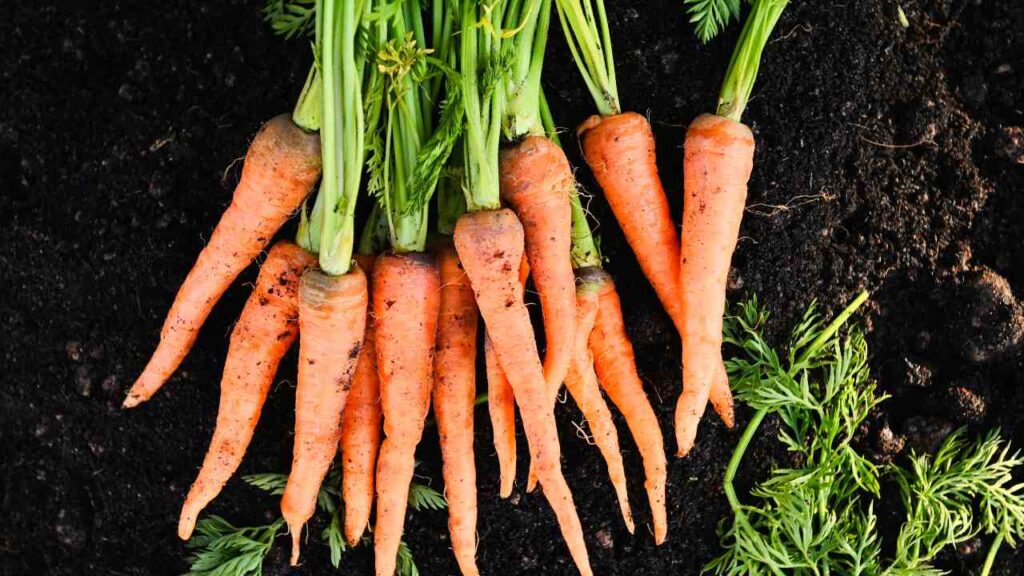
To harvest carrots, use a fork to gently lift the roots and then pull them out.
When the carrot shoulders start to show above the dirt and the greens are about 12 inches tall, it’s time to pull a few roots to see if they’re ready. While carrots can be eaten at any stage, they are most nutritious when picked when large. You worked hard to get them to sprout, after all.
To begin, lift the roots up with a wide fork or a digging fork. This keeps the top from snapping off of the root by chance. Grab the bottom of the carrot and move it around slowly until it’s simple to pull up.
Take Off the Tops to Store Them

After the gathering, take off the greens and wash the roots well before putting them away.
Be sure to remove carrot greens before refrigerating. Put carrot tops in the trash or feed chickens as treats, but don’t store the roots.
The tops take water from the roots, which makes the roots dry out and flop over in the fridge. As soon as you gather the vegetables, cut off the greens and wash the roots under running water before bringing them to the kitchen.
Last Thoughts
Frontloading your work is the key to carrots. You can have a successful germination and a relatively stress-free root-growing season if you take the time to loosen the soil, plant the seeds correctly (not too deeply!), and keep them constantly moist.
Don’t forget to space the plants at least an inch apart to keep them from getting too crowded. No one wants carrots that are skinny and weak! Finally, when you harvest, use a broad fork or a digging fork so you don’t break the roots at the base by mistake.

